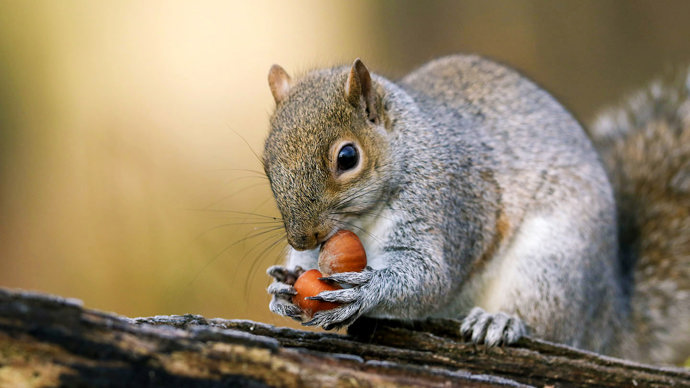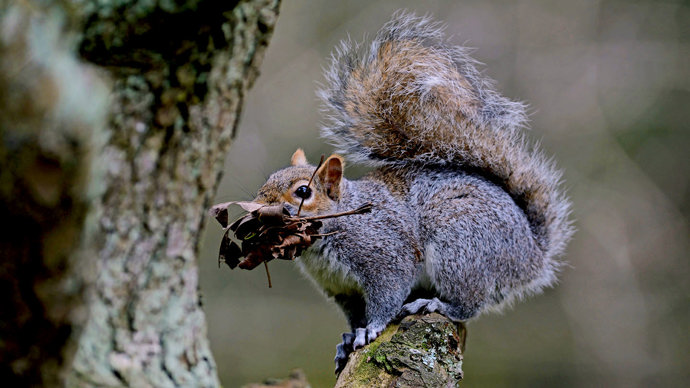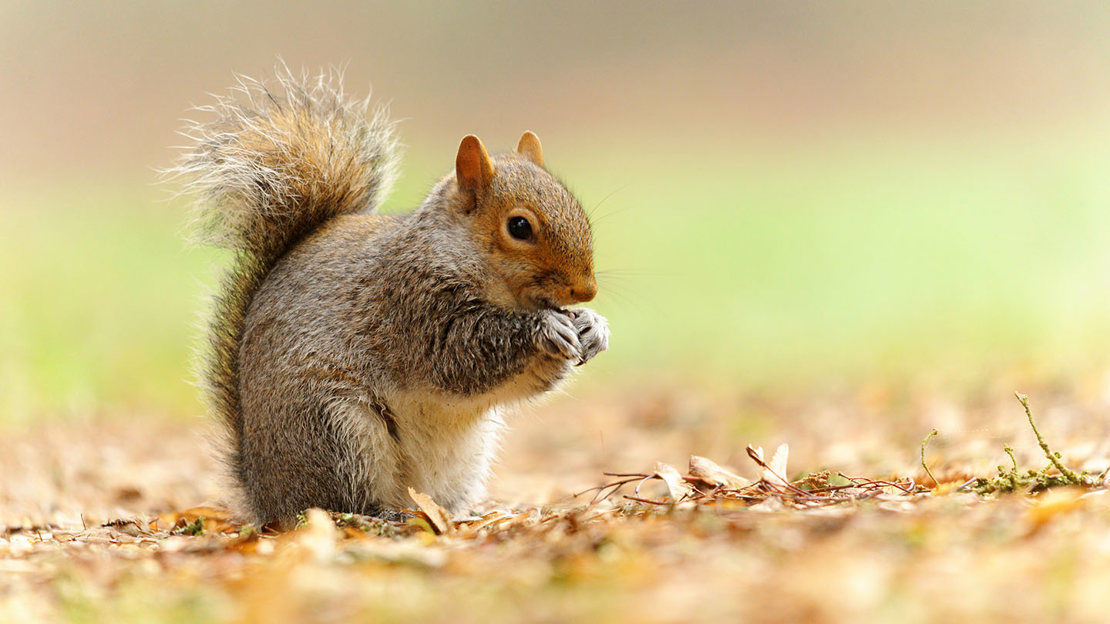Common names: grey squirrel, eastern gray squirrel
Scientific name: Sciurus carolinensis
Family: Sciuridae
Habitat: woodland, urban areas
Diet: nuts, seeds and berries
Predators: foxes, stoats, birds of prey and pine martens
Origin: non-native
Tree-climbing nut buriers. Scampering grey squirrels are a familiar sight, but sadly these American imports have had a disastrous impact on the native red squirrel.
Common names: grey squirrel, eastern gray squirrel
Scientific name: Sciurus carolinensis
Family: Sciuridae
Habitat: woodland, urban areas
Diet: nuts, seeds and berries
Predators: foxes, stoats, birds of prey and pine martens
Origin: non-native
Grey squirrels have mainly grey fur, but may have red-brown patches, especially around the face and legs. The species has a long, bushy tail that helps it balance when tree climbing.
Not to be confused with: the red squirrel. The colour is usually enough to separate these species, but occasionally reddish-grey squirrels and greyish-red squirrels occur. If you’re not sure, look at the tail. Red squirrel tails are uniform in colour, while the tails of greys tend to contain several shades, often with a white ‘halo’ around the edge. Greys are also heavier set, with a typical weight of 550g, compared to 300g for reds.
To prevent their food stashes from being stolen, grey squirrels have been observed pretending to bury nuts in a bid to fool other squirrels that may be watching.

Credit: Sandra Standbridge / Alamy Stock Photo
Nuts, acorns and tree seeds are the main foods of choice for grey squirrels. These will be collected in autumn and buried underground, ready to be eaten in winter when food is scarce. Other food taken includes flowers, buds, shoots, pine cones and occasionally young birds and eggs.
Grey squirrels have double-jointed ankles, allowing their feet to face both forwards and backwards – a perfect adaption for tree climbing
Grey squirrels are not strongly territorial and will live in close proximity, although dominant hierarchies do exist. Breeding takes place throughout spring and summer. If enough food is available, females may produce two litters of three to four young per year.
The young are normally born in a nest made from twigs and branches that is known as a drey. Holes within trees may also be used as nesting sites. Young squirrels will leave the nest and begin foraging for solid foods after around two months.

Credit: David Tipling / NaturePL.com
Native to North America, grey squirrels were first introduced to the UK in the 19th century. The species has spread rapidly and is now common across the UK, with the exception of north and western Scotland and some islands. There are an estimated 2.7 million grey squirrels in the UK and the population is continuing to grow.
Grey squirrels do not hibernate, but can be less active in winter when food is scarce. In cold weather they will curl up and use their bushy tail as a blanket to keep warm.
Of all the UK’s mammals, grey squirrels are the easiest to see. Head to your local wood or park and you’re likely to see the rodents scampering across the ground and bounding up a tree if you get too close. Grey squirrels often visit gardens too, especially those where food is put out for the birds.

The introduction of grey squirrels has had a disastrous impact on the UK’s only native squirrel species, the red squirrel. Greys compete with reds for food and also carry a virus known as squirrelpox. While greys are actually immune to the disease, they transmit it to reds, for whom it is fatal. The UK’s only viable populations of red squirrels are in places where greys are rare or absent.
Grey squirrels can also affect the composition of native woodland by bark stripping and eating the seeds of certain trees. In parts of the country, the species is culled to protect red squirrels and mitigate its damaging impact.